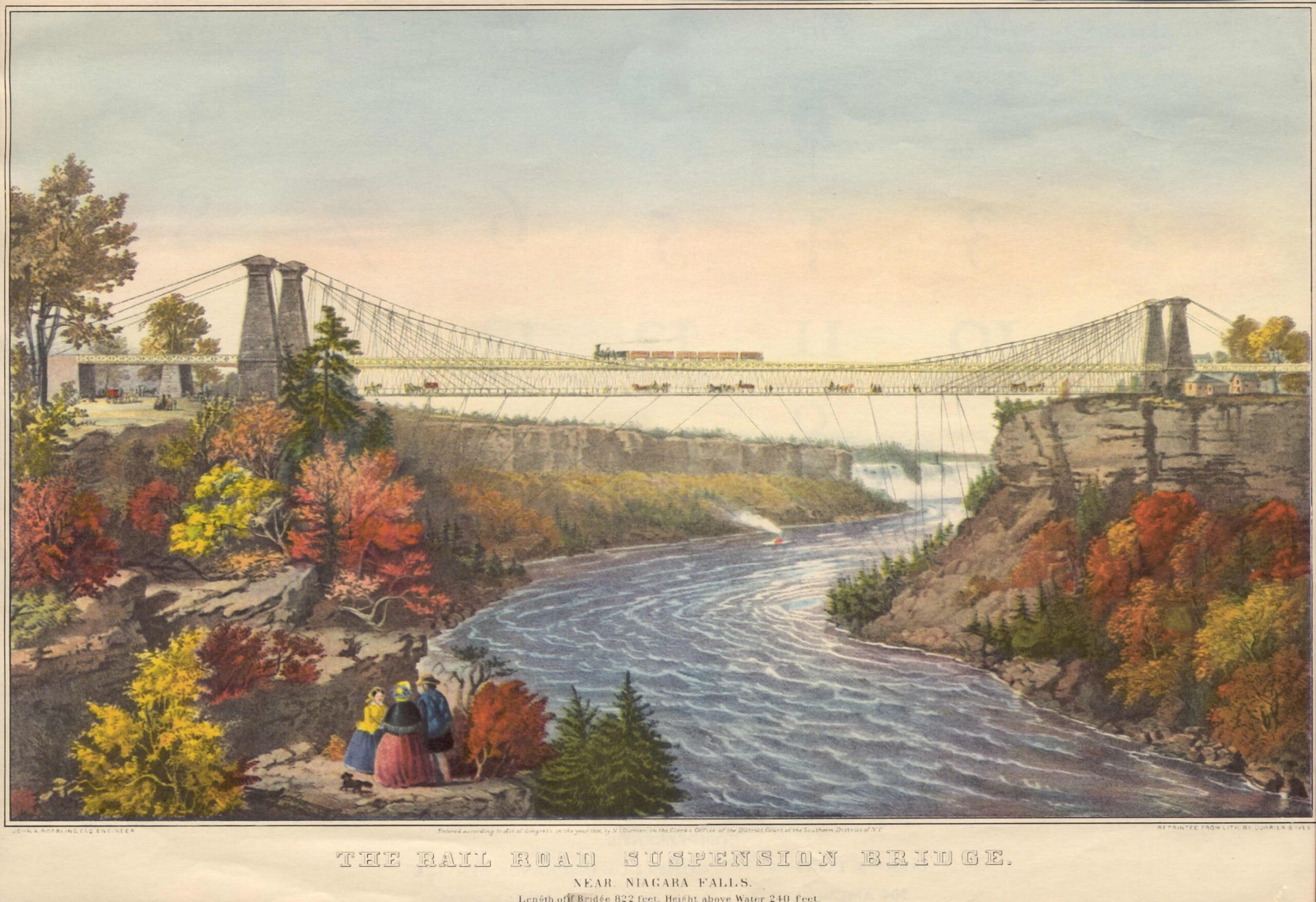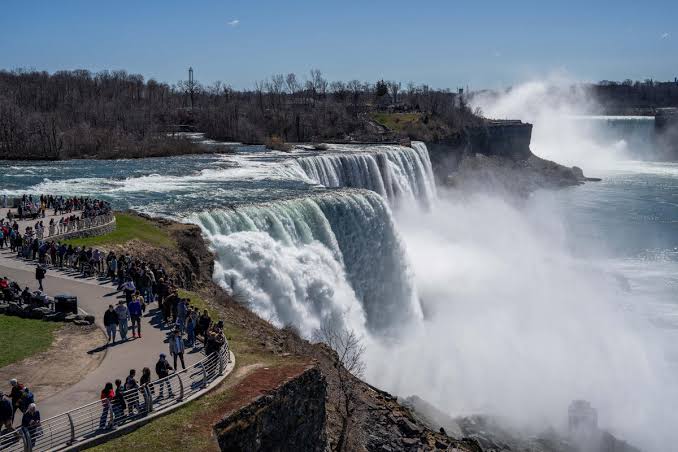“Fatal Construction Mishaps Strike Niagara Falls Bridges Claimed 100 Lives
Fatal Construction Mishaps Strike Niagara Falls Bridges in th
The construction of the iconic bridges around Niagara Falls, such as the Rainbow Bridge, in the mid-1900s, marked a monumental achievement in engineering and architecture, linking Canada and the United States across one of the world’s most famous natural wonders. However, these grand projects also brought with them dangerous working conditions that led to numerous fatal accidents. The workers who toiled to construct these vital pieces of infrastructure faced high-altitude work, hazardous machinery, and the relentless threat of falls, many of which claimed lives and left lasting marks on the history of the region.
The Rise of Niagara Falls Bridges
As the 20th century progressed, the need for efficient transportation routes between Canada and the United States grew significantly. The construction of bridges over Niagara Falls became essential for both economic and social reasons, with the Rainbow Bridge—completed in 1941—becoming one of the most recognized structures at the falls. Designed to facilitate international traffic and provide a safe passage for travelers, the bridges were an engineering marvel of their time.
However, these ambitious bridge projects were not without their challenges. Workers were tasked with constructing structures over the powerful Niagara River, often in difficult weather conditions and dangerous environments. The sheer size and complexity of the projects, coupled with the precarious conditions of working on high scaffolds or near dangerous rapids, contributed to a series of fatal accidents throughout the construction process.
The Rainbow Bridge: A Construction Marvel with a Heavy Toll
The Rainbow Bridge, a vital link between Niagara Falls, New York, and Niagara Falls, Ontario, was one of the most significant projects of its time. The bridge was constructed in the late 1930s and early 1940s to replace an earlier, less secure bridge. Workers were exposed to several hazards, including the risk of falling from great heights, handling heavy materials, and working in close proximity to the fierce waters of the Niagara River.
One of the most tragic accidents during the construction of the Rainbow Bridge occurred when several workers fell from scaffolds while installing the steel arches that form the bridge’s signature structure. As the bridge’s construction advanced, the need for precision and safety became even more critical. However, with limited safety equipment and a rush to complete the project, the workers were often forced to navigate the dangerous heights without adequate fall protection.
A combination of mechanical failures, worker fatigue, and inadequate safety measures led to a series of accidents that resulted in the deaths of several workers. The fatalities occurred during the bridge’s final stages of construction, with some victims falling to their deaths as they worked on the upper sections of the bridge. The tragic loss of life was a sobering reminder of the perils of bridge construction in the mid-1900s.
Other Bridges: Similar Hazards and Fatalities
While the Rainbow Bridge is the most well-known structure to have witnessed such fatalities, other bridges constructed around Niagara Falls during the same period also experienced deadly mishaps. The Whirlpool Rapids Bridge, built in 1941, and the older Niagara River Gorge Bridge were all projects that saw tragic accidents. These structures were crucial for both military and civilian traffic, especially during wartime, when the flow of goods and people was vital.
The workers on these bridge projects, much like those on the Rainbow Bridge, were exposed to the same risks. High-altitude construction, combined with powerful machinery and electrical equipment, made the job hazardous. Many workers fell to their deaths while working on scaffolding or suspended from cranes as they installed heavy steel beams or positioned concrete supports. Others succumbed to injuries after being struck by falling debris or caught in machinery.
The fatalities were not limited to a single incident but were part of the ongoing struggle for safety in the face of rapid industrialization. Despite efforts to improve working conditions, the fatal accidents during these years highlighted the dangers inherent in large-scale construction projects, particularly those involving massive infrastructure over challenging landscapes like Niagara Falls.
The Role of Technology and Safety Advancements
During the mid-1900s, construction technology was not as advanced as it is today, and safety protocols were not as stringent as modern standards would demand. Workers had limited access to the safety gear we take for granted today, such as harnesses, helmets, or fall protection systems. Construction sites were rife with risks, from precarious scaffolding to exposure to heavy machinery, which lacked the automated safety features that are now commonplace.
The Rainbow Bridge and other bridges in the region were constructed during an era when worker safety was not as highly prioritized, and industrial accidents were relatively common. The lack of proper safety measures, such as guardrails, personal protective equipment, and emergency response plans, contributed significantly to the fatalities during construction. It was not uncommon for workers to be exposed to extreme weather conditions, including high winds and freezing temperatures, while working on the exposed, towering sections of the bridges.
These tragic incidents, however, did not go unnoticed. They played a key role in sparking changes in construction safety practices. As the years passed, the industry began to implement stricter regulations, ensuring that workers were better protected on dangerous sites. The lessons learned from these fatal accidents influenced the development of better safety standards, including the introduction of more comprehensive worker protection equipment and the establishment of safety oversight agencies.
Lasting Impact on the Niagara Falls Community
The deaths that occurred during the construction of the Niagara Falls bridges left a lasting impact on the local community. Families mourned the loss of loved ones who had been working to complete a project that would serve the public for generations. The construction workers who died were often breadwinners, leaving behind families who struggled with their loss. In addition to the emotional toll, the tragedy raised questions about the balance between progress and worker safety, prompting public outcry and calls for change in construction practices.
Today, the bridges over Niagara Falls stand as a testament to the engineering prowess of their creators, but they also serve as a reminder of the sacrifices made by those who built them. The workers who died during their construction are remembered for their bravery and resilience in the face of unimaginable risks. Over time, as construction technology and safety measures have improved, the memory of these workers continues to influence the way modern construction projects are managed.
Conclusion
The tragic fatalities that occurred during the construction of bridges around Niagara Falls in the mid-1900s were a painful part of the region’s history. Workers endured hazardous conditions, and many paid the ultimate price for their hard work. While these tragic losses cannot be undone, their stories served as a catalyst for improving safety standards in the construction industry. Today, as we cross the iconic Rainbow Bridge or pass under the towering structures, we are reminded of the lives lost and the legacy of those workers whose sacrifices helped shape one of the world’s most famous natural landmarks.






